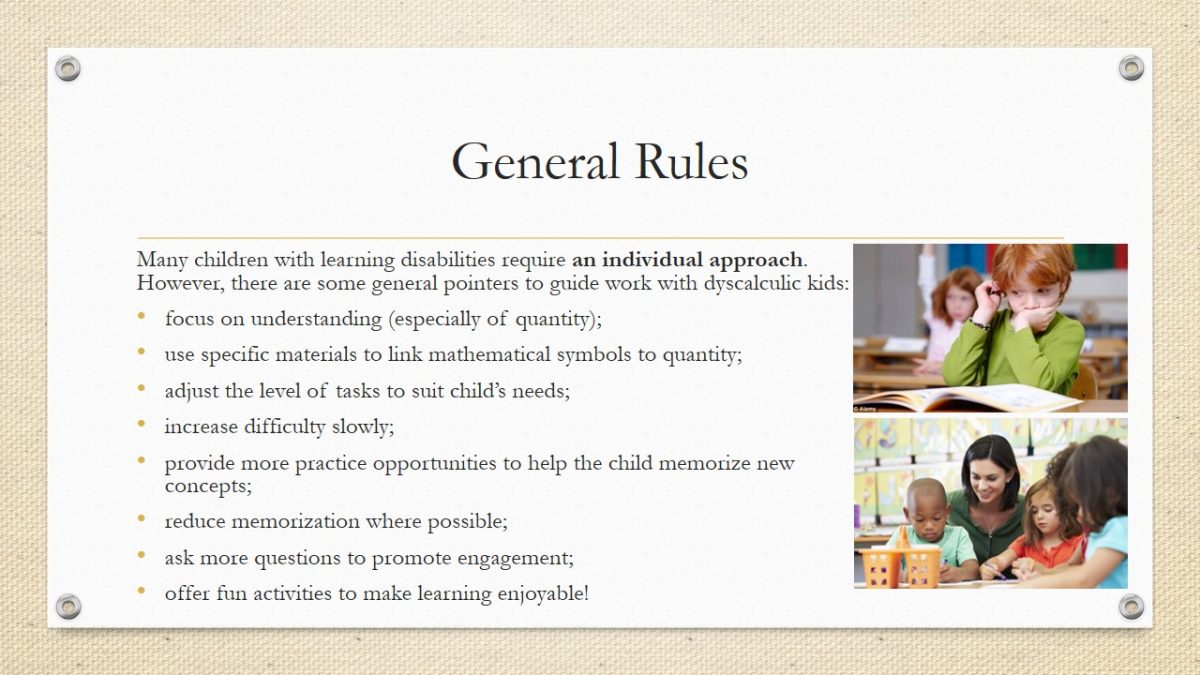Classroom Accommodations
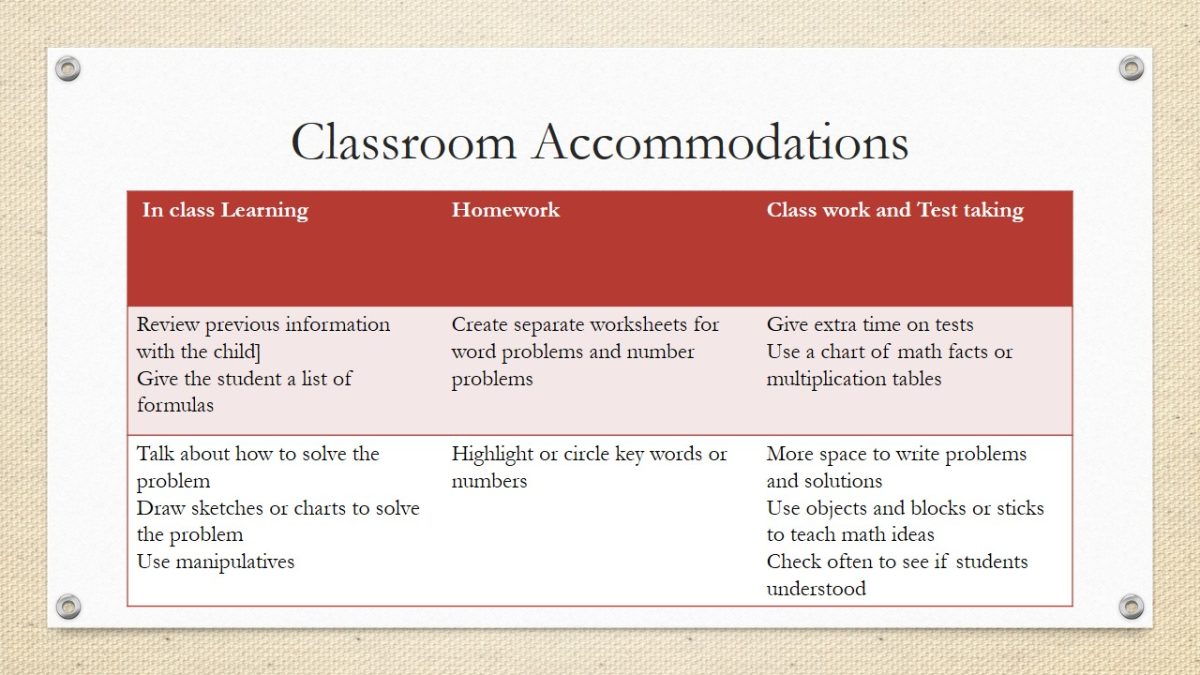
Managing Learning Difficulties
- Learning difficulties may cause children to develop behavioral problems, such as:
- reduced self-confidence, shyness;
- fighting with other kids;
- increased irritability;
- tiredness, etc.
- Interventions usually focus on problems instead of the cause.
- It is necessary to address the fundamental cause (learning difficulty) rather than the child’s behavior.
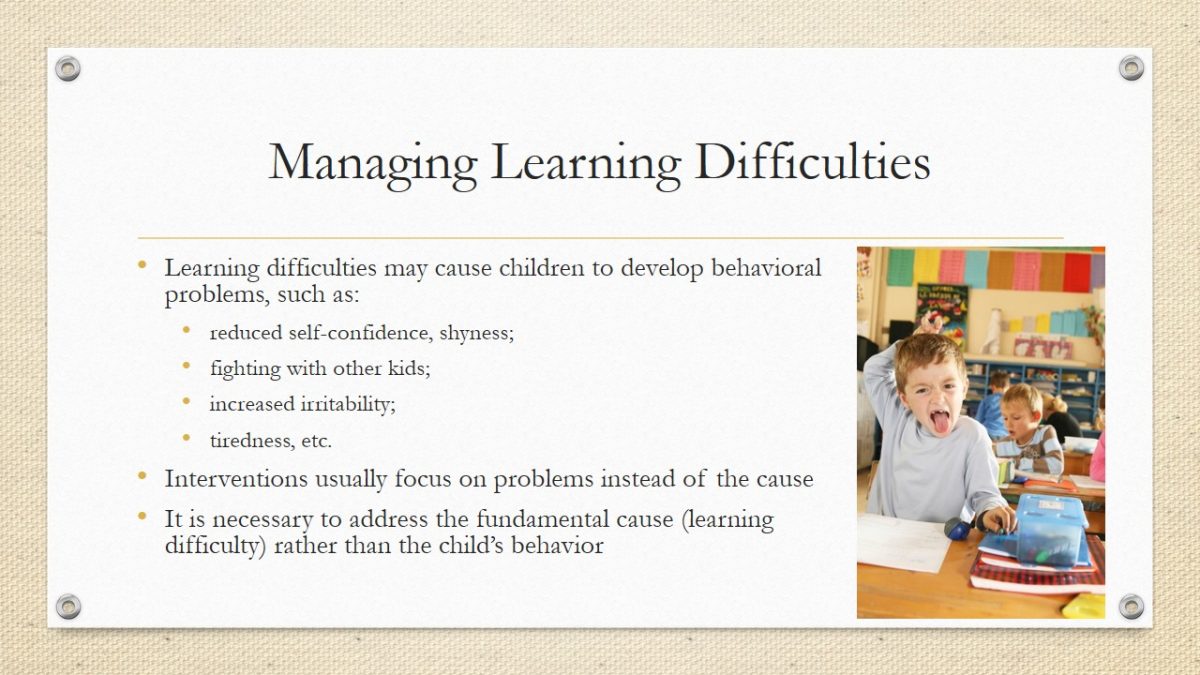
Dyscalculia Characteristics
Dyscalculia is a learning disorder characterized by difficulties in learning mathematics.
A child who has dyscalculia:
- seems to have little ‘number sense’;
- has trouble with counting, memorizing arithmetical facts or numbers, following procedures, or executing strategies;
- in any of the above tasks, may be inaccurate, slow or both;
- exhibits dislike or anxiety towards math and/or avoidance behaviors, etc.
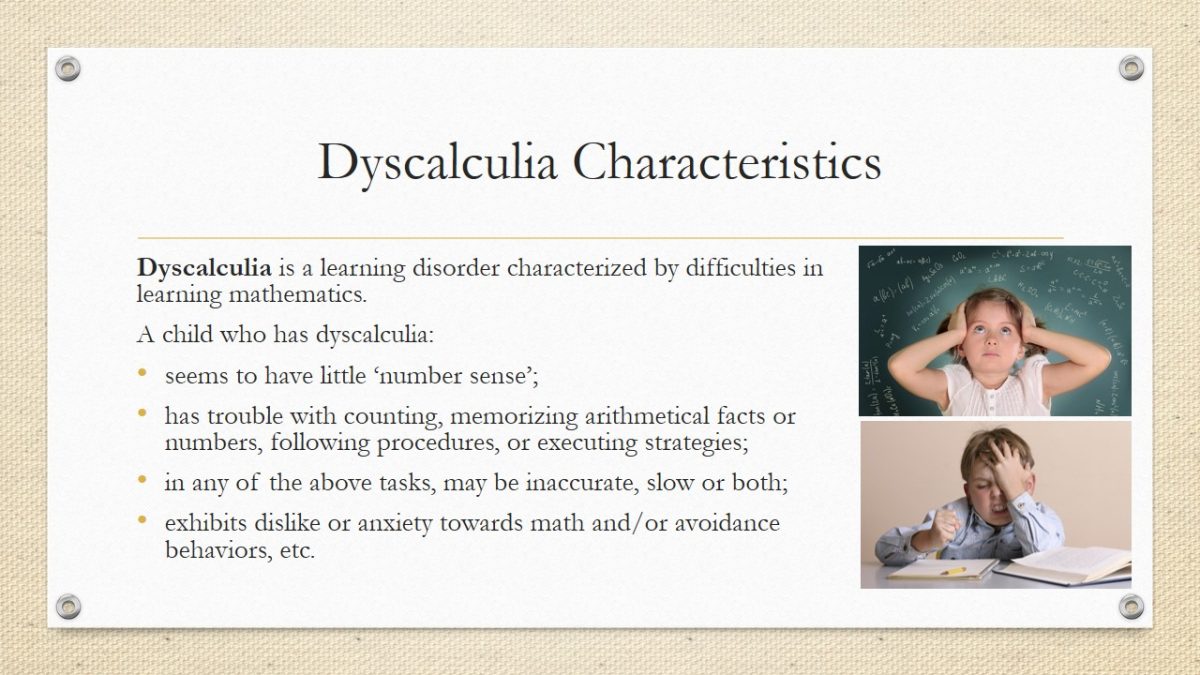
Make Maths Lessons Positive
Maths teachers can address children with dyscalculia by making their lessons as positive as possible by:
- giving children with dyscalculia their own sets of work to complete, which are in accordance with their level;
- allowing extra time for completion: kids with learning difficulties may be slow, even with manageable tasks;
- using written rather than spoken instructions to explain tasks: dyscalsulic children already spend a lot of energy on trying to solve mathematical tasks, and asking them to memorize the instructions may result in task overload.
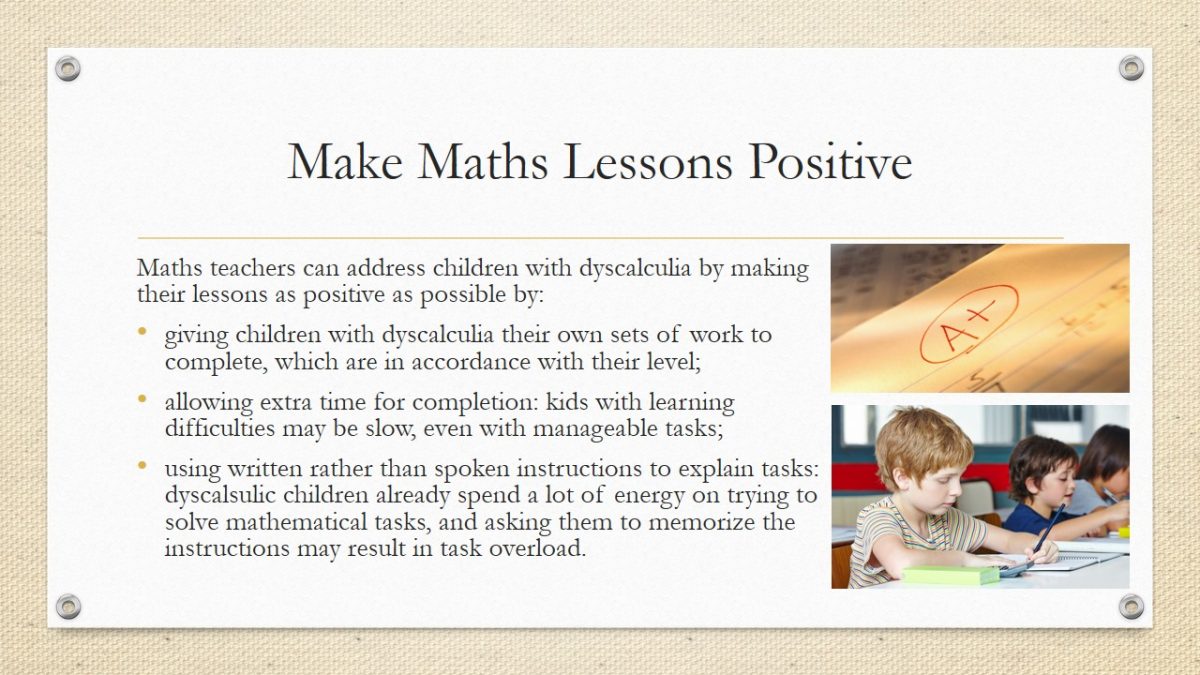
General Rules
Many children with learning disabilities require an individual approach. However, there are some general pointers to guide work with dyscalculic kids:
- focus on understanding (especially of quantity);
- use specific materials to link mathematical symbols to quantity;
- adjust the level of tasks to suit child’s needs;
- increase difficulty slowly;
- provide more practice opportunities to help the child memorize new concepts;
- reduce memorization where possible;
- ask more questions to promote engagement;
- offer fun activities to make learning enjoyable!
